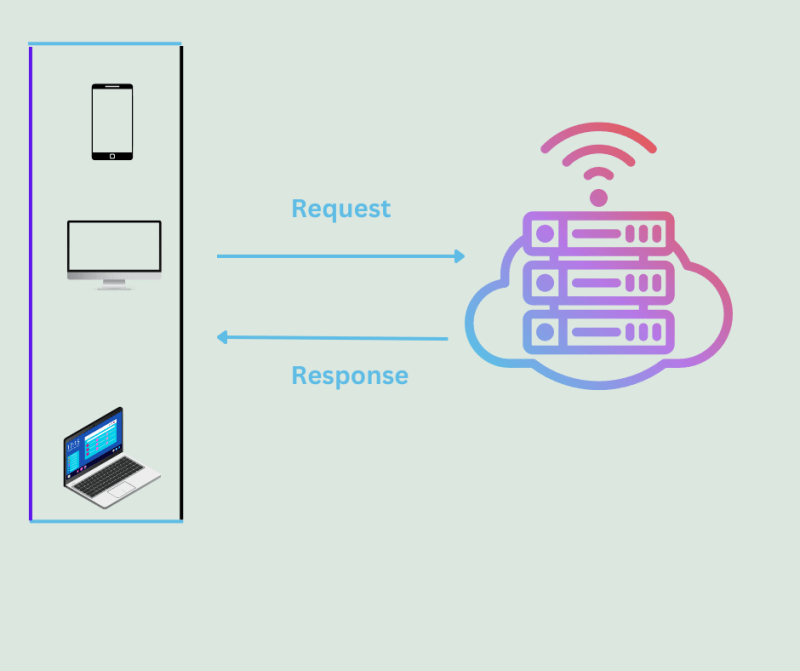Client-server architecture is a fundamental concept in computer networking that underlies the efficient exchange of information between devices.
It is a distributed computing model where tasks and responsibilities are divided between two entities: the client and the server.
In this comprehensive guide, we will explore the client-server architecture, its components, and its benefits in facilitating seamless communication in the digital realm.

1. What is client
The client, often referred to as the front-end, represents the user-facing component of the client-server architecture.
It is typically a software application or a device that interacts directly with the user.
Clients send requests to the server, receive and display the requested information, and provide an interface through which users can interact with the system.
Examples of clients include web browsers, mobile apps, email clients, and even IoT devices.
2. What is Server
The server, also known as the back-end, is the central component of the client-server architecture.
It is responsible for storing, managing, and processing data and providing services to clients upon request.
Servers are designed to handle a large number of simultaneous client connections, ensuring scalability and reliability.
They have powerful hardware, such as high-capacity storage devices and robust processors, to handle the computational and storage requirements of the applications and services they provide.
3. Communication Protocol
For clients and servers to communicate effectively, a communication protocol is required.
A protocol defines a set of rules and formats that govern the exchange of data between the client and the server.
The most common protocol used in client-server architecture is the Hypertext Transfer Protocol (HTTP), which enables the transfer of web pages, images, and other resources over the internet.
Other protocols, such as File Transfer Protocol (FTP), Simple Mail Transfer Protocol (SMTP), and Transmission Control Protocol (TCP), are also used for specific purposes within the client-server model.
4. Request-Response Cycle
The client-server architecture operates on a request-response cycle.
The client initiates a request by sending a message to the server, specifying the desired action or data.
The server receives the request, processes it, and generates a response that contains the requested information or confirmation of the action performed.
This response is then sent back to the client, which interprets and displays the data or carries out the necessary actions based on the server's response.
This cycle allows for seamless interaction between clients and servers, enabling the exchange of information in real-time.
Benefits of Client-Server Architecture
Client-server architecture offers several advantages in facilitating efficient communication and data management:
Scalability: Servers can handle multiple client connections simultaneously, allowing the system to scale to accommodate increasing user demand.
Centralized Data Management: Servers centralize data storage and management, ensuring data integrity and providing a single source of truth for clients.
Security: Centralized servers enable the implementation of robust security measures, such as authentication and access control, to protect sensitive data.
Efficiency: By dividing tasks between clients and servers, client-server architecture optimizes resource utilization, allowing clients to focus on user interaction while servers handle data processing and storage.
Flexibility: Clients can run on various platforms and devices, providing users with flexibility in accessing services and information from different locations.


Top comments (0)